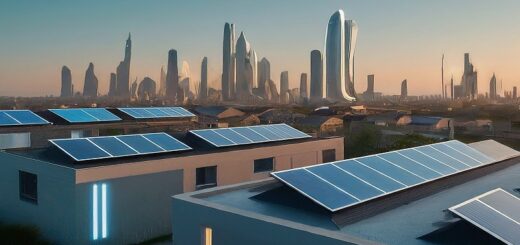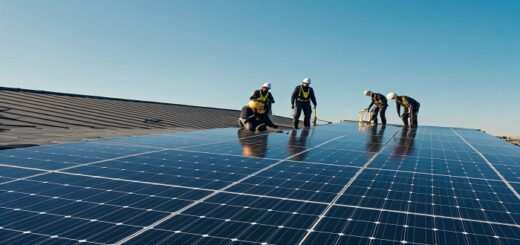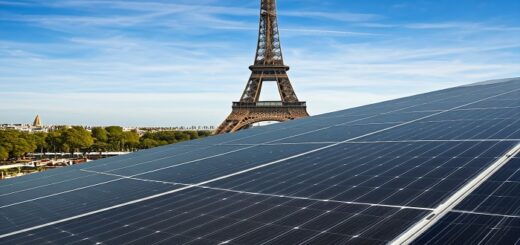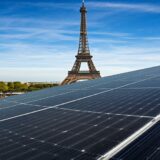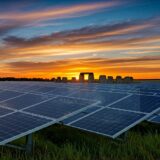Bifacial Solar Panels
Bifacial solar panels are a new generation of solar technology designed to harness the power of the sun from both the front and back surfaces. Unlike traditional Monofacial panels, which only capture sunlight hitting the front side, Bifacial panels can potentially increase energy production by up to 30%.
Bifacial solar panels can increase electricity yield by 10–20% compared to Monofacial panels, which only capture radiation from one side. They can also reduce electricity costs by allowing for smaller roof areas to produce the same amount of electricity, and by requiring fewer modules and system components.

Here’s a detailed look at Bifacial solar panels:
How Bifacial Solar Panels Work:
Double-sided Light Absorption: Bifacial panels have a transparent backsheet instead of an opaque one, allowing sunlight to pass through and reach the solar cells on both sides.
Reflective Surfaces Enhance Efficiency: The key to maximizing Bifacial panel output lies in the installation environment. When placed over a reflective surface, like a white roof or light-colored gravel, the reflected sunlight hits the back of the panel, further boosting electricity generation.
However, Bifacial panels are more expensive than regular one-sided panels, and they may require more time and effort to install. They are also unsuitable for use in areas with lots of shade or obstructing buildings, and Bifacial panels with double-sided glass surfaces are heavier than conventional solar panels.
Are Bifacial solar panels better?
Bifacial solar panels can be better than traditional Monofacial panels, but it depends on your specific situation. Here’s a breakdown of the pros and cons to help you decide:
Advantages of Bifacial Solar Panels:
Higher Energy Production: Bifacial panels can capture sunlight from both sides, potentially generating 3-10% more electricity, reaching up to 25% gains in ideal conditions with high reflectivity.
Space Optimization: In some cases, you might need fewer Bifacial panels to achieve your desired energy output compared to Monofacial panels.
Versatility: They perform well in areas with high albedo (reflectivity), like snowy regions or with white rooftops. They can even generate some power under snow cover if the back can still capture reflected sunlight.
Disadvantages of Bifacial Solar Panels:
Higher Cost: Bifacial panels are currently more expensive than traditional panels.
Site Dependence: For Bifacial panels to truly shine, they need reflective surfaces like light-colored gravel or white roofs to maximize backside light capture. Traditional panels might be sufficient on a dark rooftop.
Installation Complexity: Proper installation to optimize backside light capture might require additional considerations.
So, are Bifacial panels better?
For large-scale solar farms and ground-mounted systems: Bifacials can be a great choice due to their potential for higher energy production and potentially lower balance-of-system costs (fewer panels needed).
For residential rooftops: The benefit might be smaller unless you have a highly reflective roof. The higher cost might outweigh the advantage of potentially slightly more energy generation.
Do Bifacial solar panels increase efficiency?
Yes, Bifacial solar panels have the potential to increase efficiency compared to traditional Monofacial panels. Here’s the breakdown:
How They Increase Efficiency:
Double-sided Light Capture: The key feature of Bifacial panels is their ability to capture sunlight from both the front and back sides. This is achieved by using a transparent backsheet instead of an opaque one, allowing light to pass through and reach the solar cells on the backside.
Reflective Surfaces Enhance Gain: The real efficiency boost comes from the installation environment. When Bifacial panels are placed over a reflective surface, like white roofing or light-colored gravel, the reflected sunlight hits the back of the panel, further increasing electricity generation.
Potential Efficiency Gains:
Range of Increase: Bifacial panels can potentially increase energy production by 3-10% compared to Monofacial panels in most situations.
Ideal Conditions: Under ideal conditions, with a highly reflective surface, Bifacial panels can achieve efficiency gains as high as 25%.
Important Factors to Consider:
Not Guaranteed: The actual efficiency increase depends on the amount of reflected light captured by the back of the panel. Sites with minimal reflective surfaces might see negligible gains.
Installation Impact: Proper installation to optimize backside light capture can be crucial for maximizing efficiency.
Overall:
Bifacial panels offer the potential for significant efficiency gains, but it’s not a guaranteed improvement. Carefully consider your specific site conditions and the reflectivity of the installation environment before deciding if Bifacial panels are the right choice for you.
What is the difference between monocrystalline and Bifacial solar panels?
Both monocrystalline and Bifacial solar panels are types of solar panels with distinct characteristics:
Monocrystalline Solar Panels:
Cell Material: Made from pure silicon crystals, giving them a uniform black appearance.
Efficiency: They are among the most efficient solar panels available, converting a high percentage of sunlight into electricity (typically around 18-22%).
Cost: Due to the manufacturing process, they are generally more expensive than other types of panels.
Bifacial Solar Panels:
Cell Material: Can be made from various materials, including Monocrystalline silicon. However, the key feature is that they have solar cells on both sides.
Efficiency: They boast the potential for higher overall efficiency than Monocrystalline panels because they capture sunlight from both the front and back (potentially 3-10% more compared to Monofacial).
Cost: Currently, they are more expensive than traditional Monocrystalline panels due to the added complexity of the double-sided design.
In essence:
Monocrystalline panels are a well-established technology offering high efficiency, making them a good choice for maximizing energy production in limited space, even if the upfront cost is higher.
Bifacial panels are a newer technology with the potential for even higher efficiency, but their effectiveness depends on having a reflective surface behind the panels. They might be a good choice for large-scale solar farms or situations where maximizing energy output is crucial and a reflective surface is available.
Things to Consider:
Cost: Bifacial panels are currently more expensive than traditional panels.
Site Conditions: The effectiveness of Bifacial panels relies on reflective surfaces behind the panels. Not all environments will provide this benefit.
Installation Complexity: Installing Bifacial panels may require specific considerations to optimize backside light capture.
Overall, Bifacial solar panels are a promising technology with the potential to increase solar energy production.
However, careful consideration of costs, site conditions, and installation factors is crucial before making a decision.


